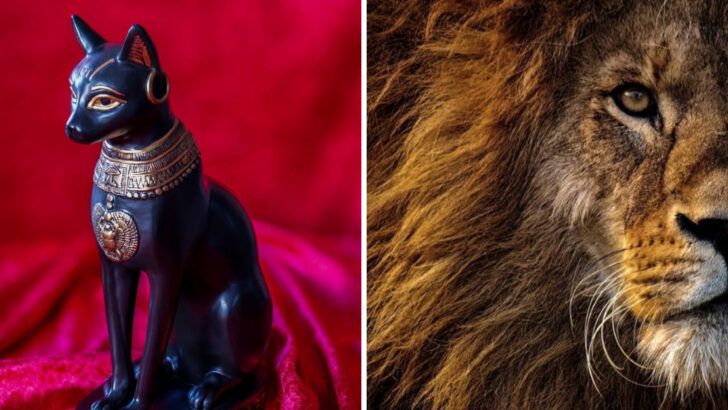Throughout history, animals have held a special place in many cultures, often seen as symbols of power, wisdom, or even divine protection. From ancient Egypt to Hindu mythology, various animals were revered and worshipped, with their traits believed to connect mortals to higher spiritual realms. These animals weren’t just pets or creatures of the wild – they were seen as representations of gods and played pivotal roles in religious and cultural practices.
Take the sacred cats of ancient Egypt, for example. They were considered protectors and were often associated with the goddess Bastet. Or, the monkeys in Hinduism, who are revered for their connection to the god Hanuman, symbolizing strength and devotion. Each animal, whether divine or symbolically important, carries a rich legacy that goes far beyond just being part of the animal kingdom. Let’s take a look at 20 animals that once carried the weight of godly reverence across different cultures.
Egyptian Cats
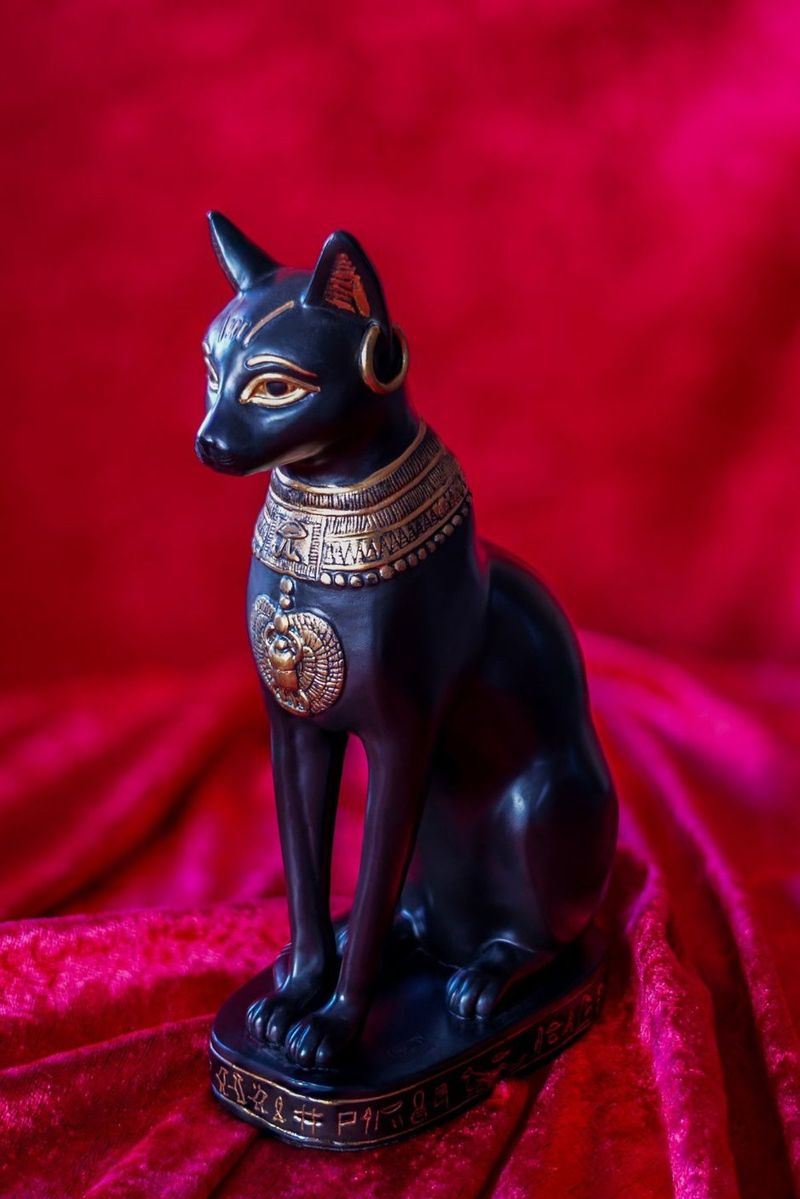
Cats in ancient Egypt were revered as sacred creatures, often associated with the goddess Bastet. They symbolized protection, fertility, and motherhood. Bastet, depicted with a lioness’s head, was a warrior goddess and a nurturing figure. Egyptians believed that cats possessed protective qualities, warding off evil spirits. The punishment for harming a cat was severe, highlighting their importance. In many households, cats were mummified and buried with their owners, ensuring companionship in the afterlife. Their graceful demeanor and hunting prowess made them both divine and practical companions.
Hindu Monkeys
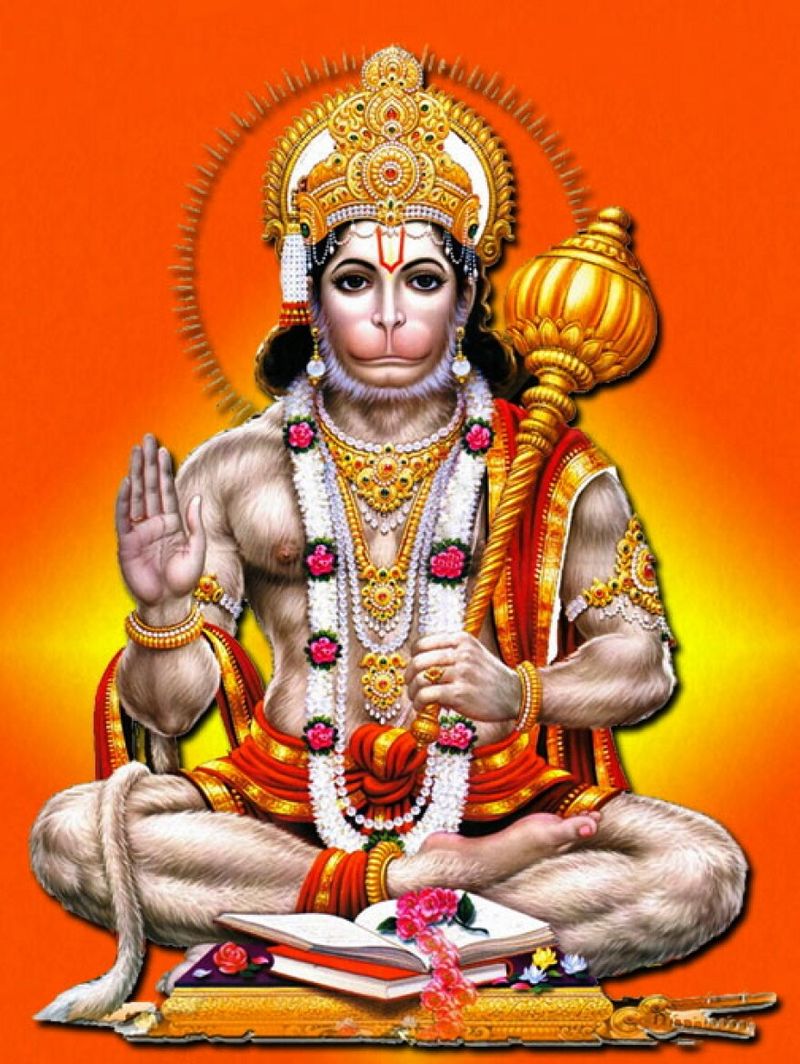
Monkeys hold a special place in Hindu mythology, notably represented by Hanuman, the monkey god. Hanuman is celebrated for his unwavering devotion and strength. His tales of loyalty and courage in the epic Ramayana inspire many devotees. Monkeys are often seen in temples, where they are fed and respected. They are symbols of energy, adaptability, and playfulness. During festivals, stories of Hanuman’s adventures are recited, reinforcing his divine status. The reverence for monkeys reflects the cultural admiration for intelligence and vitality.
Norse Ravens
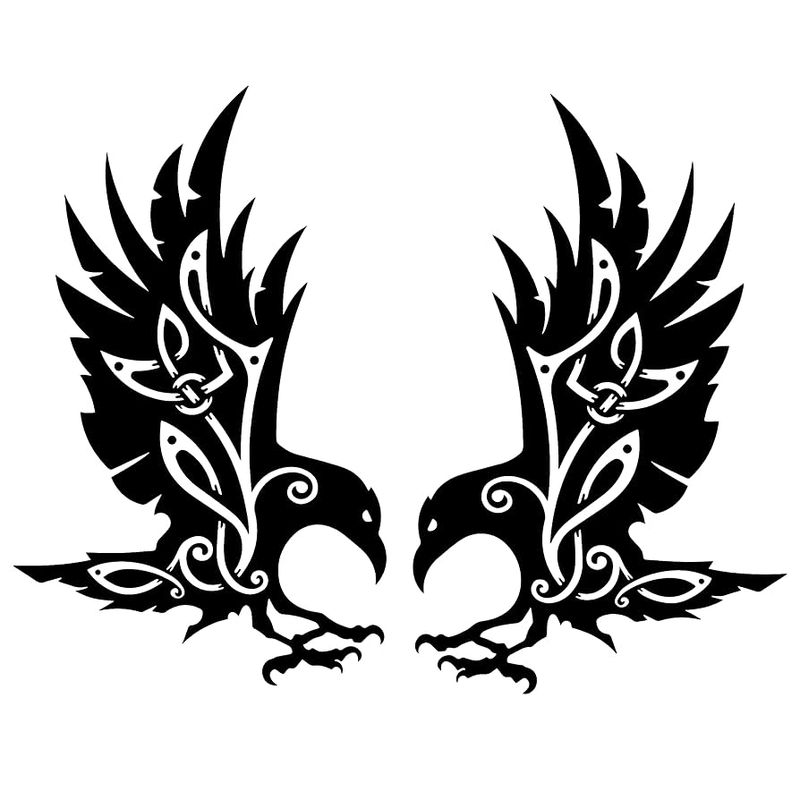
Ravens were sacred in Norse mythology, associated with the god Odin. Known as Huginn and Muninn, these birds symbolized thought and memory. They were Odin’s messengers, flying across the world to gather information. Their black feathers and piercing eyes added to their mystical aura. Vikings believed that ravens guided warriors in battle, offering foresight and protection. The presence of ravens on ships and banners underscored their importance. Their role in Norse tales emphasized wisdom, prophecy, and the connection between the divine and mortal realms.
Greek Eagles
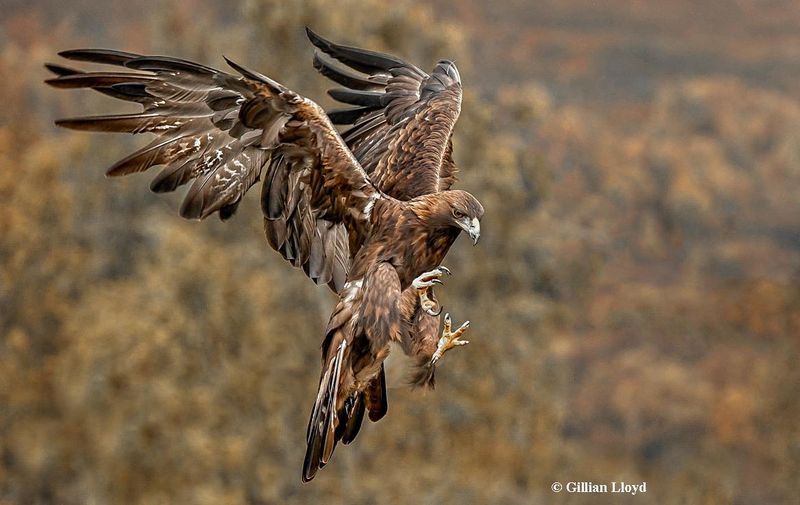
In ancient Greece, eagles were revered as symbols of Zeus, the king of the gods. They represented power, authority, and divine vision. The eagle’s ability to soar high and see far made it a fitting emblem for Zeus. Often depicted alongside him in art and literature, eagles were believed to carry messages between the gods and humans. Their presence in myths, such as the tale of Prometheus, underlined their significance. Observing eagles in the sky was considered an omen, guiding decisions and actions. Their strength and grace embodied the divine right to rule.
Chinese Dragons
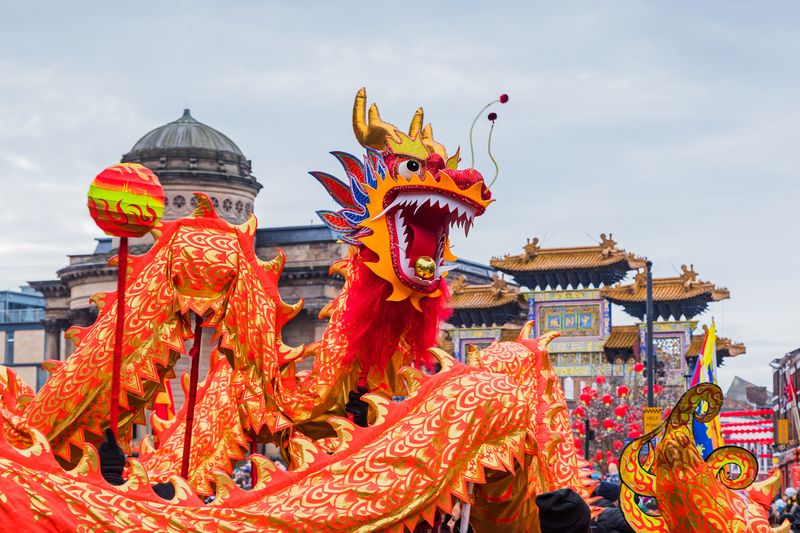
Dragons in Chinese culture are revered as benevolent and powerful creatures, symbolizing strength, wisdom, and good fortune. Unlike their Western counterparts, Chinese dragons are not feared but celebrated. They are seen as protectors of water sources, controlling rain and floods. Festivals often feature dragon dances, showcasing their importance in cultural traditions. Emperors claimed lineage from dragons, underscoring their divine status. Representing balance and harmony, dragons embody the spirit of the Chinese people. Their mythical presence in art and stories highlights their revered role throughout history.
Japanese Foxes (Kitsune)
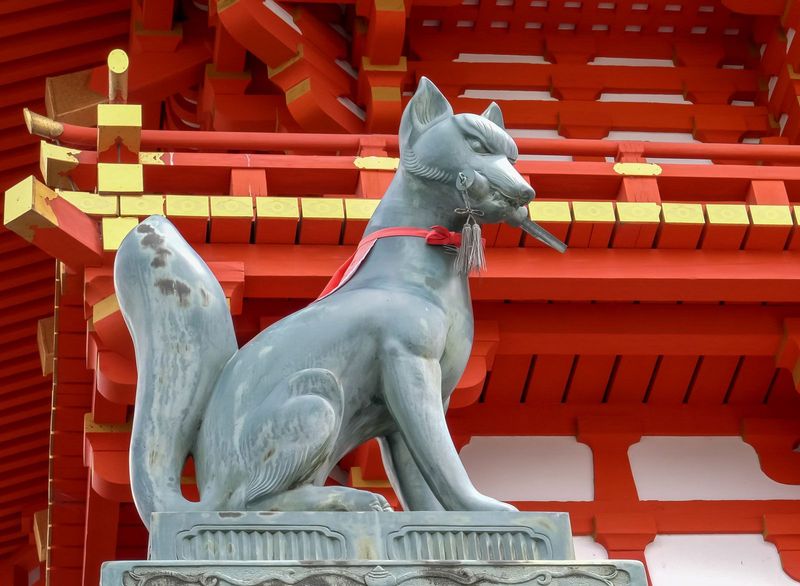
In Japanese folklore, foxes, or ‘kitsune,’ are celebrated as intelligent and magical beings. They are messengers of Inari, the deity of rice and prosperity. Kitsune are believed to possess the ability to shape-shift and protect shrines. Tales of their cunning and wisdom are widespread, reflecting their respected status. Foxes often serve as symbols of fertility and abundance, linked to agricultural success. Inari shrines, adorned with fox statues, highlight their significance in Japanese culture. Revered for their mystical qualities, kitsune bridge the human and spiritual worlds.
Mesopotamian Bulls
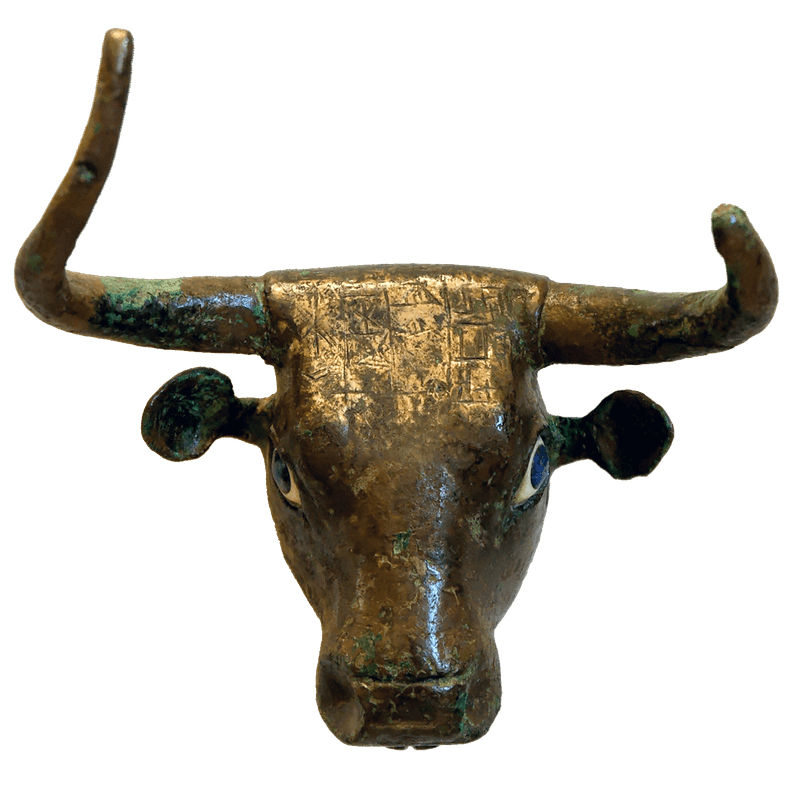
Bulls were central to Mesopotamian religious practices, often associated with gods like Enlil and Adad. They symbolized strength, fertility, and wealth. Bulls were depicted in art and mythology as mighty creatures, embodying divine power. Rituals and offerings often featured bulls, underscoring their sacred status. The bull’s image on seals and artifacts signifies its importance in trade and daily life. By embodying vitality and prosperity, bulls played a crucial role in Mesopotamian spirituality. Their revered status reflects the ancient people’s dependence on agriculture and livestock for survival.
Celtic Stags
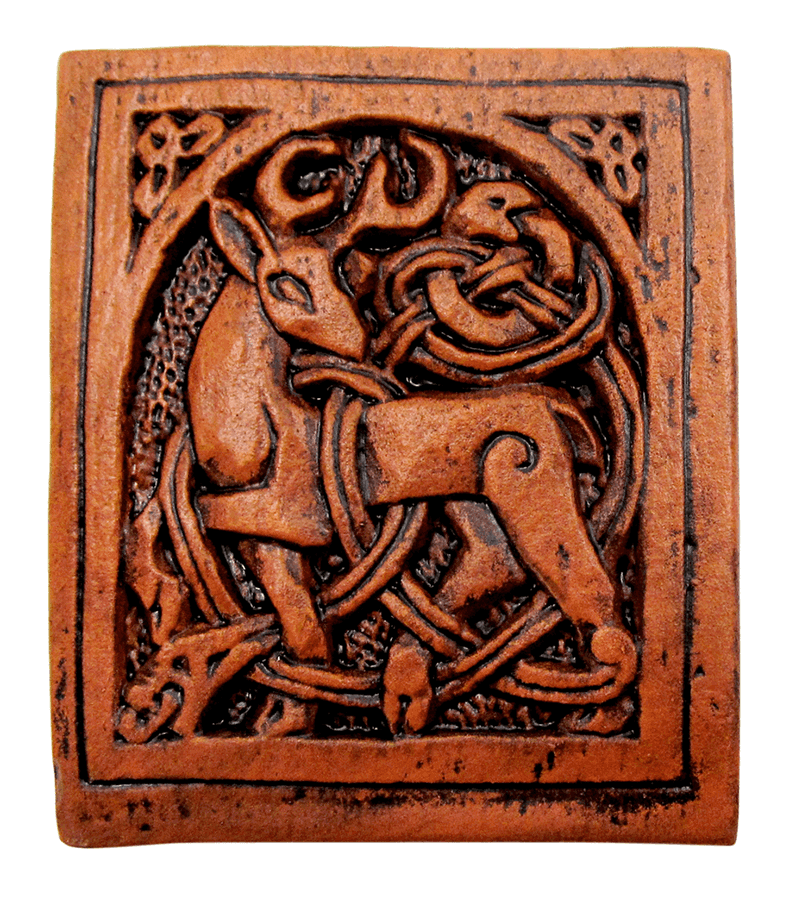
Stags were revered in Celtic mythology, symbolizing nobility, purity, and the otherworld. They were often linked to deities like Cernunnos, the horned god of nature. Stags embodied the connection between the physical and spiritual realms. Their antlers, resembling tree branches, symbolized growth and renewal. Celtic art and stories frequently featured stags, highlighting their role as guides and protectors. Hunting the stag was seen as a spiritual journey, reflecting the animal’s significance. The stag’s presence in rituals and festivals underscored its revered status across Celtic lands.
Aztec Jaguars
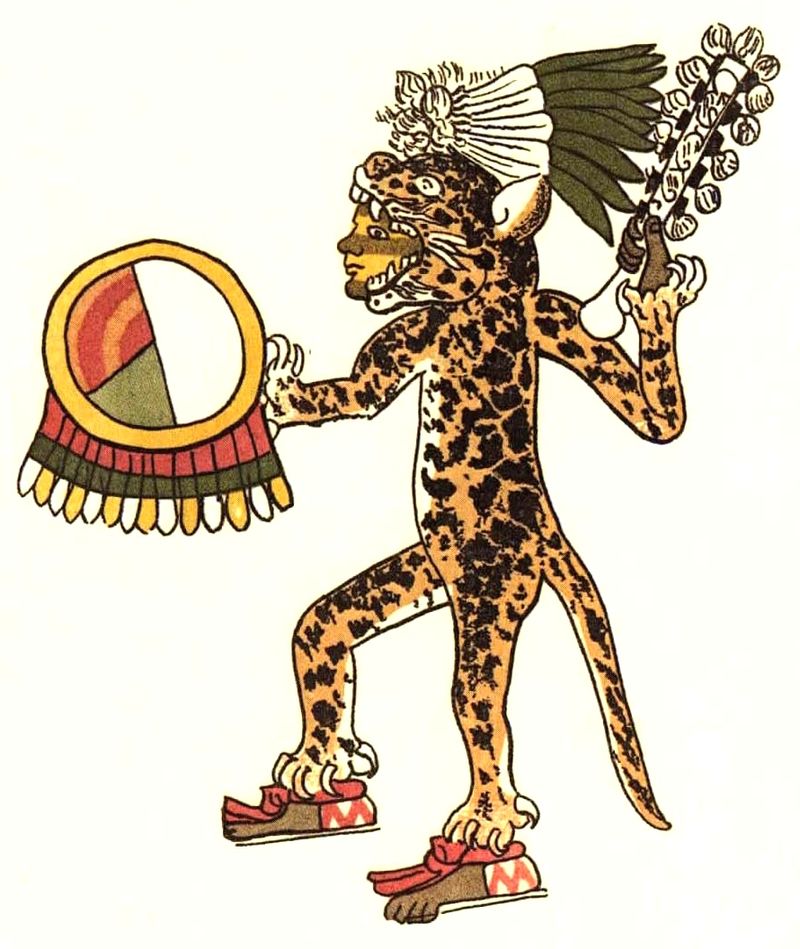
Jaguars were powerful symbols in Aztec mythology, associated with the god Tezcatlipoca. They represented strength, stealth, and the underworld. As creatures of the night, jaguars were linked to darkness and duality. Warriors donned jaguar skins, believing they embodied the animal’s power. The jaguar’s presence in rituals and art underscored its divine role. Aztec culture celebrated the jaguar’s prowess and agility, seeing it as a bridge between worlds. The reverence for jaguars reflected the people’s respect for nature’s might and mystery. Their legacy endures in modern Mexican culture.
Nigerian Leopards
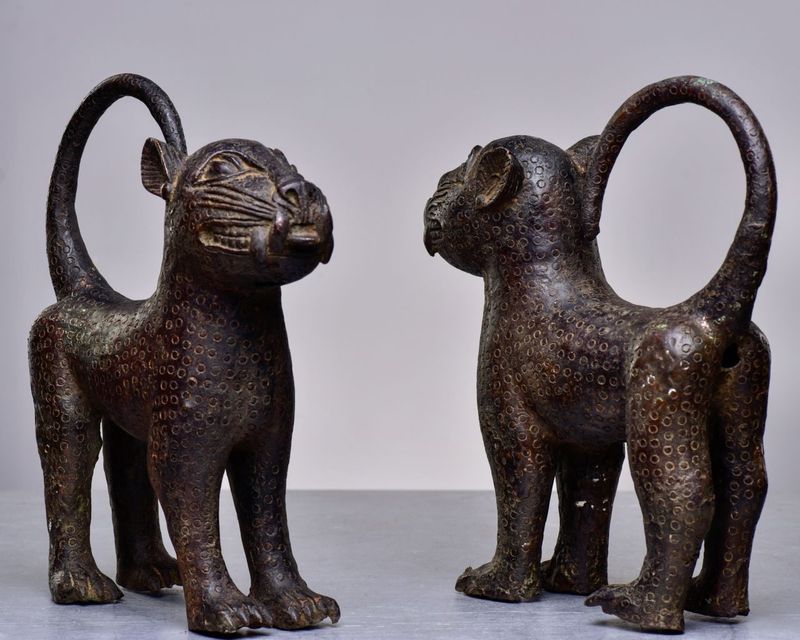
Leopards in Nigerian mythology are revered as symbols of leadership, wisdom, and courage. They are often associated with royalty and ancestral spirits. The leopard’s grace and strength make it a fitting emblem for chiefs and kings. In ceremonies, wearing leopard skins signifies power and prestige. Leopards feature prominently in tales and lore, embodying the qualities of a wise ruler. Their role in cultural traditions highlights their importance in social and spiritual life. By honoring leopards, communities celebrate bravery and strategic thinking. Their presence in art and storytelling endures.
Roman Wolves
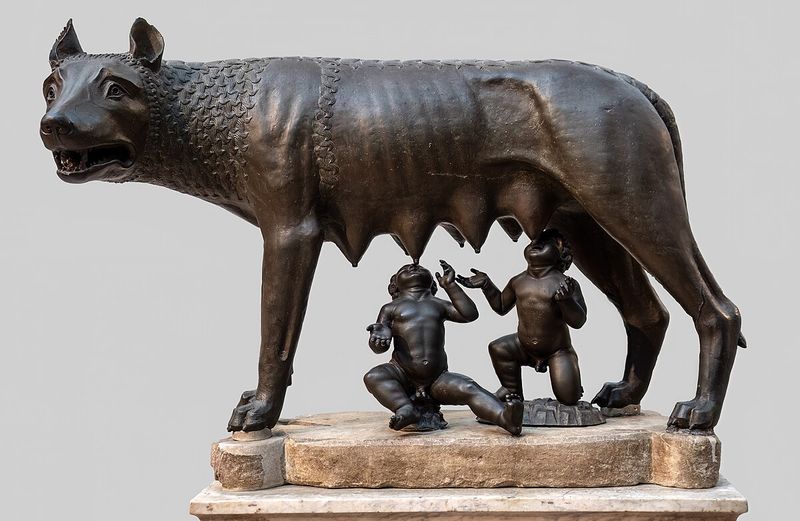
Wolves held a special place in Roman mythology, most famously linked to the story of Romulus and Remus, the founders of Rome. The she-wolf that nurtured them symbolized strength, loyalty, and the foundation of Roman civilization. Wolves were seen as protectors and fierce hunters, embodying the qualities of Roman soldiers. Their image appeared in art and coins, underscoring their cultural significance. The wolf’s role in Rome’s founding myth highlights its divine status. Revering wolves reflected the Roman admiration for discipline and strategic prowess.
Mayan Serpents
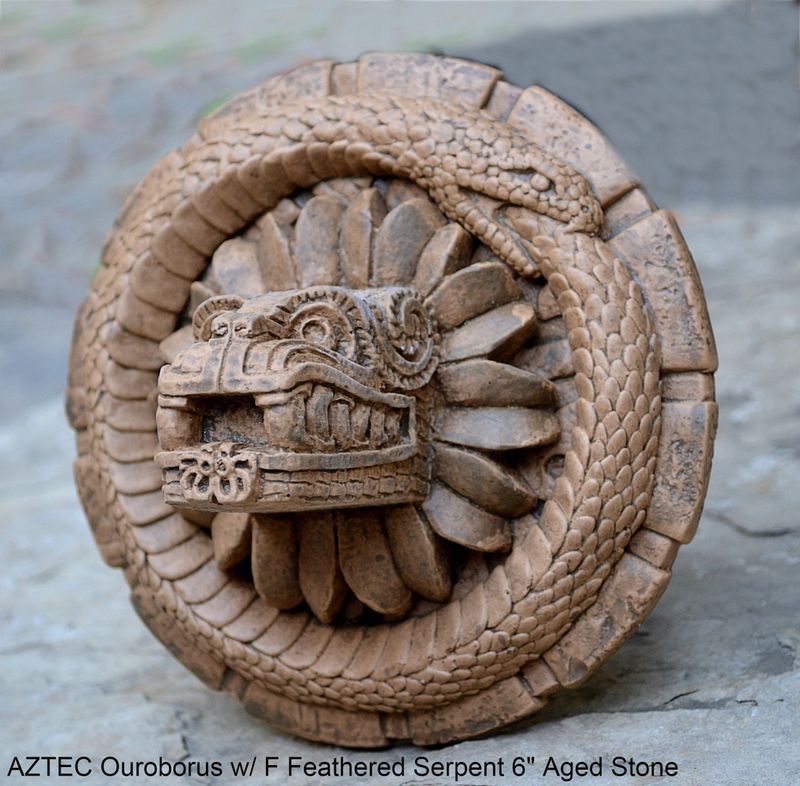
Serpents were sacred in Mayan culture, associated with the feathered serpent god, Kukulkan. They symbolized rebirth, creation, and the cosmos. Serpents were seen as celestial beings, bridging the earth and sky. The annual descent of Kukulkan at Chichen Itza showcases their importance. This event aligns with the sun, creating a serpent-like shadow on the pyramid. Serpents feature in Mayan art and architecture, highlighting their revered status. They embody transformation and continuity in Mayan spirituality. The snake’s winding form mirrors the flow of time and the universe’s cycles.
Hawaiian Sharks

In Hawaiian culture, sharks are revered as ‘aumakua,’ or family guardians. They symbolize protection, guidance, and ancestral connection. Many Hawaiians believe that sharks embody the spirits of their ancestors. Stories of shark deities, like Kamohoali’i, reflect their divine role. Sharks are seen as protectors of the ocean, commanding respect and reverence. In rituals and chants, they are honored as powerful beings. The relationship with sharks underscores the importance of harmony with nature and the sea. Their presence in Hawaiian beliefs highlights a deep spiritual connection to the ocean.
Persian Lions
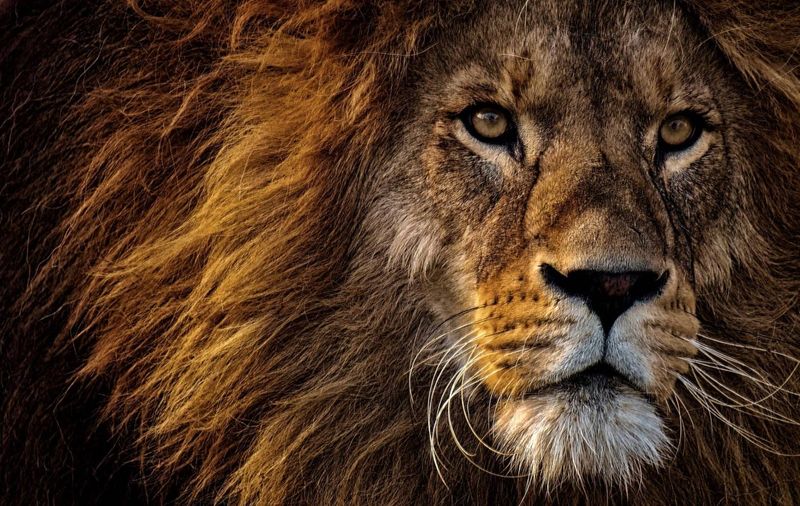
Lions were significant in Persian culture, symbolizing royalty, courage, and divine protection. Associated with the sun god Mithra, lions embodied strength and victory. They appeared prominently in art, architecture, and royal insignia. The lion’s imposing presence underscored its role as a guardian of kings and empires. Hunting lions was a symbol of bravery, celebrated in Persian traditions. The reverence for lions reflects the admiration for leadership and power. Lions in Persian culture are seen as majestic and noble, embodying the qualities of a true ruler.
Egyptian Scarabs
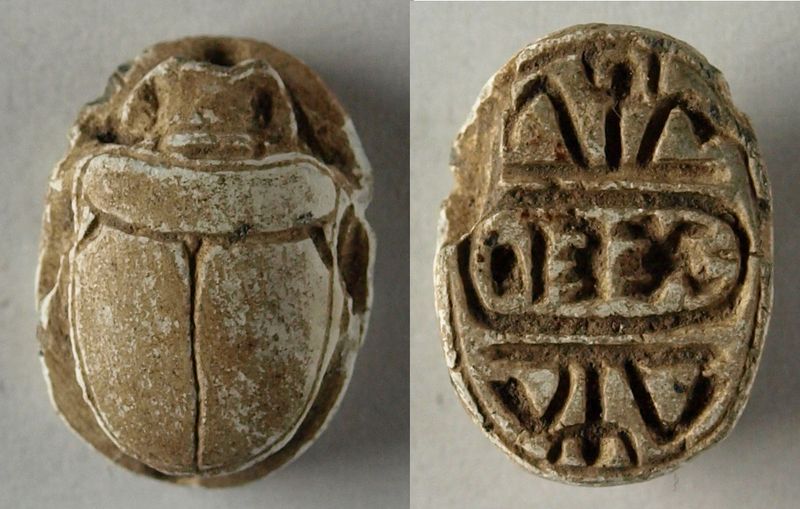
Scarabs in ancient Egypt were revered as symbols of transformation, resurrection, and protection. They were linked to the sun god Ra and the concept of eternal life. Scarabs rolling dung balls mirrored the sun’s journey across the sky. These beetles appeared in amulets, jewelry, and tomb inscriptions, highlighting their sacred status. The act of carving scarabs reflected the belief in rebirth and renewal. Scarabs served as talismans, offering protection in this life and the next. Their enduring legacy underscores the Egyptian focus on the afterlife and transformation.
Australian Rainbow Serpent
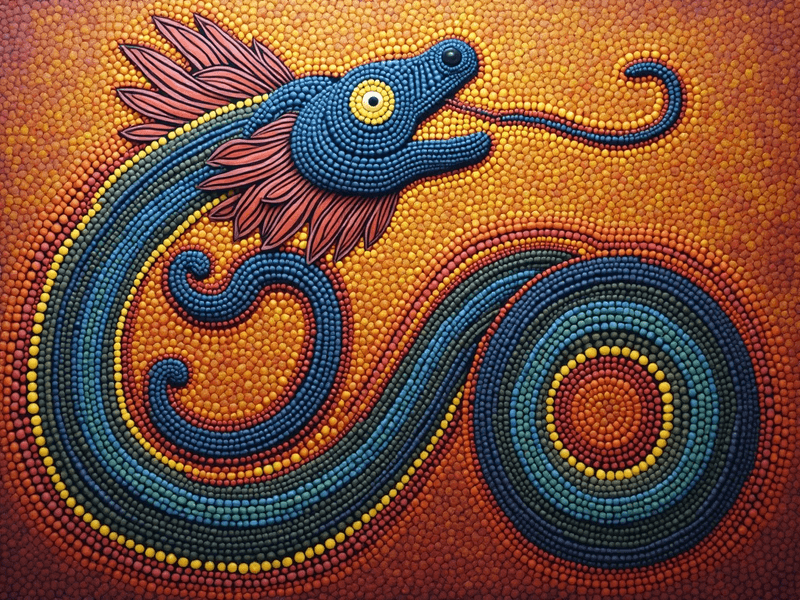
The Rainbow Serpent is a revered figure in Indigenous Australian mythology, symbolizing creation and fertility. It is seen as a powerful ancestral being that shaped the land and its people. The serpent’s movements are believed to have formed rivers and mountains. Stories of the Rainbow Serpent are passed down through generations, reflecting its central role in cultural traditions. Its presence in ceremonies and art underscores its importance in spiritual life. The serpent’s vibrant colors symbolize the connection between earth and sky. It embodies the continuity of life and nature’s cycles.
Incan Condors
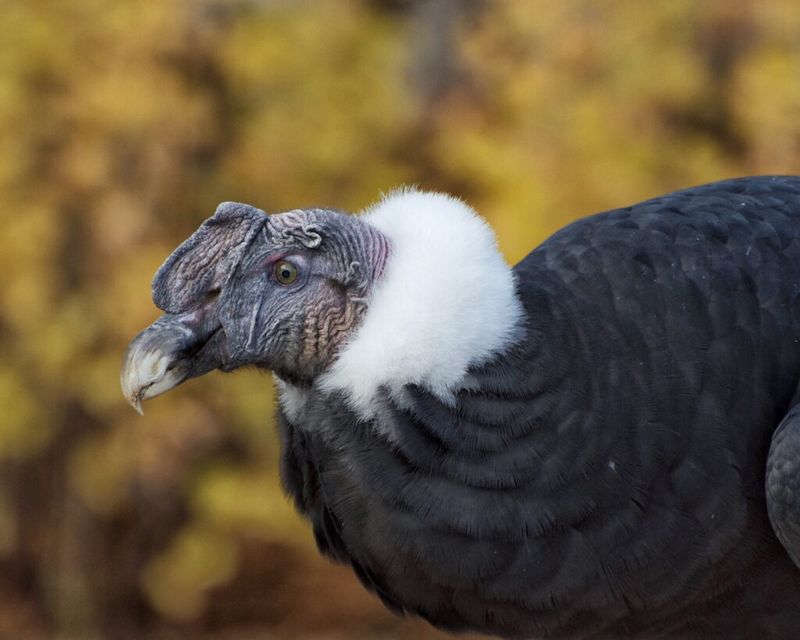
Condors were revered in Incan culture as symbols of strength, freedom, and the sky. They were seen as messengers between the earth and the heavens. The condor’s impressive wingspan and soaring flight inspired awe and respect. Incan ceremonies often included condors, reflecting their divine status. They represented the connection between the tangible world and the spiritual realm. Condors are still celebrated in Andean cultures, embodying the ideals of endurance and vision. Their legacy in mythology underscores the cultural importance of harmony with nature and the cosmos.
Maori Whales

Whales hold a special place in Maori culture, symbolizing family, guidance, and the ocean’s power. They are seen as guardians of the sea, embodying wisdom and strength. Tales of whale ancestors and deities reflect their revered status. In Maori art and carving, whales are prominent, highlighting their cultural significance. Whales are believed to guide navigators, reflecting the deep connection to the sea. Their presence in stories and rituals underscores the importance of respecting the ocean. Whales symbolize the enduring bond between people and the natural world.
Zulu Crocodiles
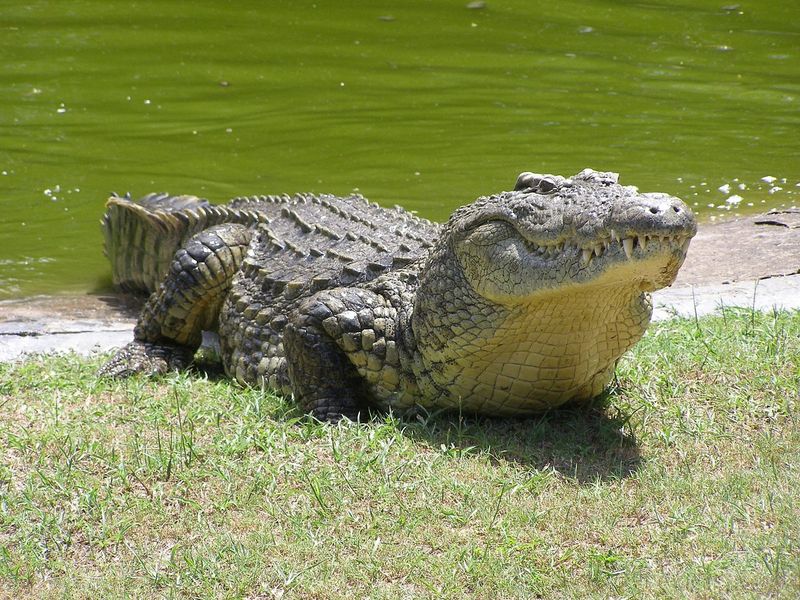
Crocodiles in Zulu culture are seen as symbols of strength, survival, and protection. They are associated with the water spirit, reflecting their connection to nature and the elements. Crocodiles feature in tales and proverbs, embodying resilience and adaptability. They are seen as guardians of the water, commanding respect and caution. In rituals and ceremonies, crocodiles are honored for their formidable presence and power. Their role in Zulu spirituality underscores the importance of living in harmony with nature. Crocodiles continue to be celebrated in cultural traditions and storytelling.
Siberian Reindeer
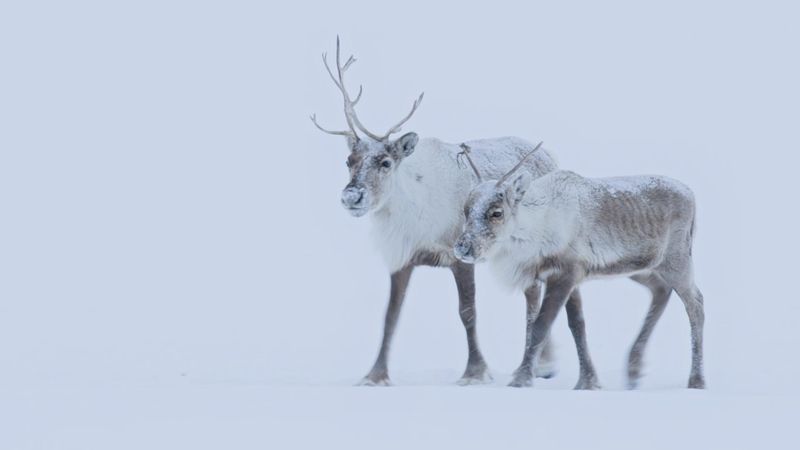
The majestic Siberian Reindeer was once revered by the indigenous Evenki people of Siberia. They believed these creatures were celestial beings that could traverse between worlds. In winter rituals, the Evenki shamans adorned themselves with reindeer antlers, channeling spirits for guidance and protection.
These reindeer were not just seen as animals but as vital spiritual messengers. Their antlers, reaching skywards, symbolized a connection to the heavens.
Today, the Evenki honor this bond with reindeer, upholding traditions that celebrate their enduring legacy and spiritual significance in Siberian culture.

